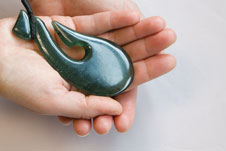 Friday 29 April 2016 11:10am
Friday 29 April 2016 11:10am
New Zealand is making gains at improving underlying factors affecting the health of Māori children and young people, a new report by the University of Otago-based NZ Child and Youth Epidemiology Service shows.
However the report, produced with funding from the Ministry of Health, also documents that much work is still needed to achieve equity in social determinants of health, with Māori (and Pacific) children nearly twice as likely as Pākehā children to grow up in households experiencing significant hardships.
The researchers, headed by NZCYES Director Dr Jean Simpson, of the University of Otago, provide a snapshot of progress in addressing many of the determinants of health including child poverty and living standards, housing, early childhood education, tobacco use, alcohol related harm, and children's exposure to family violence. It also updates a previous report released three years ago in 2012.
At the 2013 census there were 233,000 Māori children aged 0-14 years and 127,750 Māori young people aged 15-24 years living in Aotearoa NZ.
The progress in this latest report includes:
- An increasing proportion of Māori new entrants who have participated in early childhood education prior to school entry, up from 83.6per cent in 2001 to 96.3 per cent in 2013.
- The halving of rates of school suspensions from 18.8 per 1000 Māori students in 2000 to 9.1 per 1000 Māori students in 2013.
- Increased immunisation rates at all ages under 5 years, with the highest rate (92.1 per cent) observed at 12 months of age.
- A dramatic fall in tobacco use in young people, with the proportion of Māori Year 10 school students who smoked daily falling from 36.3 per cent for female students and 23.6 per cent for male students in 1999, to 10.1 per cent of female and 6.9 per cent of male students in 2013.
- Hospitalisation rates of Māori children aged 0-14 years for injuries arising from assault, neglect or maltreatment declined from 40.2 hospitalisations per 100,000 in 2008–09 to 25.2 hospitalisations per 100,000 in 2012–2013, whereas non-Māori non-Pacific rates showed little change over that time. Hospitalisation rates for injuries arising from assault, neglect or maltreatment were highest for Māori infants aged under one year.
The New Zealand Child and Youth Epidemiology Service acting Director, Dr Mavis Duncanson, wants to assist those working in the health sector to consider the roles other agencies play in influencing child and youth health outcomes that are related to these determinants:
“An inter-agency approach is necessary since addressing the disproportionate burden of avoidable morbidity and mortality experienced by Māori children and young people is a formidable task for the health sector alone. Working jointly with Child Youth and Family and the Police to protect vulnerable children from intentional injury, or with Housing New Zealand and other social housing providers to ensure families can access affordable good quality housing, are examples of tangible starting points.
“We can see from this that there is a positive story emerging and that the investment is having positive outcomes, but it also highlights ongoing unequal distribution of power, money and resources essential to health.”
Throughout NZ Māori children and young people (aged 0-24 years) are more likely than non-Māori to live in areas with the highest deprivation scores and lowest school decile ratings.
In 2013 21.9 per cent of Māori children and young people compared with 5.5% of non-Māori non-Pacific children and young people lived in areas with the highest deprivation scores on the New Zealand Index of Deprivation.
From 2011 to 2013, on average, 34 per cent of Māori children and 16 per cent of European children lived in households experiencing relative poverty (less than 60 per cent of national median income after housing costs).
In commenting on the report, Ms Bridget Robson Associate Dean (Māori), University of Otago, Wellington, says; “The whole of society gains when all children have equitable access to excellent education, healthy secure housing, safe environments to live, learn and play, and opportunities to fully participate in the economic, social and cultural life of the nation.”
Ms Robson quoted the whakataukī “Te toto o te tangata he kai; te oranga o te tangata he whenua” (the lifeblood of a person is derived from food; the livelihood of a people depends on land) to illustrate the importance of wealth as well as income in achieving an inclusive society.
“Income provides the kai – what we need to survive every day. Wealth is with the whenua. With whenua we can feed the people of today and the generations of tomorrow. We can store kai for lean times, grow our pa harakeke, and build our whare to house the people.”
This wisdom is consistent with the World Health Organization recognition that inequitable outcomes in health status are mostly the result of the conditions in which children are born and grow; conditions shaped largely by the distribution of power, money and resources and collectively known as the social determinants of health. The authors of this report are Jean Simpson, Judith Adams, Glenda Oben, Andrew Wicken and Mavis Duncanson.
For further information, contact:
Dr Mavis Duncanson
Senior Research Fellow
University of Otago
Tel: 03 479 4522
Email: mavis.duncanson@otago.ac.nz
A list of Otago experts available for media comment is available elsewhere on this website.
Electronic addresses (including email accounts, instant messaging services, or telephone accounts) published on this page are for the sole purpose of contact with the individuals concerned, in their capacity as officers, employees or students of the University of Otago, or their respective organisation. Publication of any such electronic address is not to be taken as consent to receive unsolicited commercial electronic messages by the address holder.
